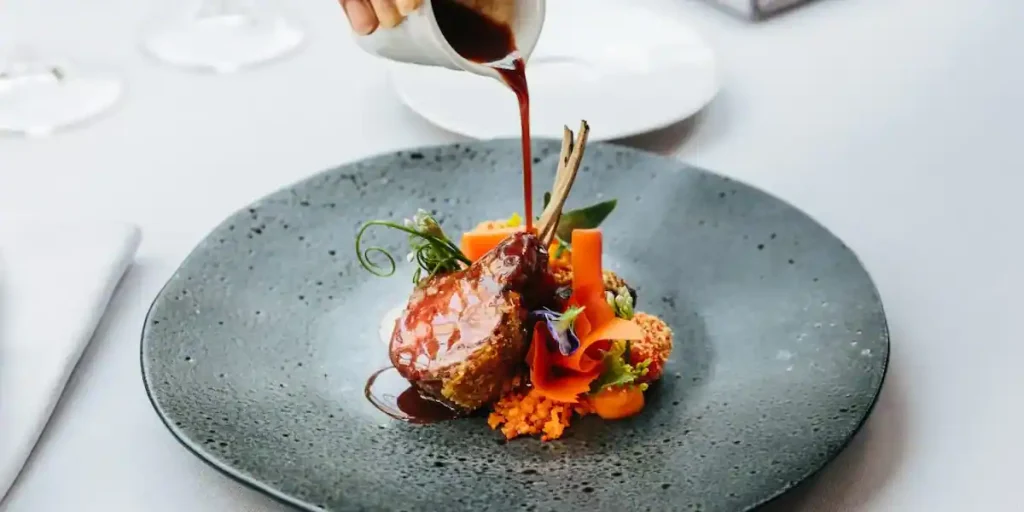
Why do we need to reduce and manage fruit and vegetable waste?
Fruits and vegetables are wasted approximately 50%; losses of $48.3 billion are incurred in the USA as a result. Water usage in agriculture is high. Water usage for the production of food that is wasted is about 50%. The supply of water in nature is limited. Particularly in California, several farmers tried drilling deeper into the earth in an effort to access water. Eruptions are more likely because they disturb the earth’s surface. Food waste can be reduced and managed, which will result in less food being produced overall and less water being used.
Gas is used to move produce, such as fruit and vegetable. We can lower the cost of gasoline for transportation if food output is reduced. Managing and minimizing fruit and vegetable waste can help achieve this.
The concept of carbon footprint is well-known. Let’s discuss the food footprint. We can save around $1,000 a year if we minimize the amount of food we produce, which will also allow us to use less water and gasoline. Ruvi can help us lower our food footprint. Ruvi is a tasty beverage made from freeze-dried fruit and vegetable that is high in phytochemicals, vitamins, and minerals. It regularly enhances our nutrition. Fresh fruits and veggies are preferable, but if we combine them with Ruvi, we may cover any nutritional shortages as well as lessen the demand for fresh fruit and vegetable produce. Drinking Ruvi is good for the environment, your budget, and your health.
We can manage fruit and vegetable waste to make it cost-effective by turning it into value-added goods.
“Throwing away food is like stealing from the table of those who are poor and hungry” (Pope Francis)
How to reduce and manage fruit and vegetable waste?
The peels and seeds of many fruits and vegetables, including citrus berries, mangoes, onions, potatoes, tomatoes, and sugar beets, have higher concentrations of phenolics and other bioactive substances than their corresponding edible tissues, indicating that these wastes could be a significant source for isolating bio-active compounds.
These sources contain phytochemicals and other bioactive elements with anti-cancer and antioxidant properties, such as polyphenols. The incidence of heart disease and capillary fragility is decreased, platelet aggregation is decreased, and vertebrates are shielded from thrombosis, oxidative stress, osteoporosis, and diabetes as a result of their protective effects.
In the pharmaceutical industry, penta-O-galloyl-glucoside (PGG), which is found in mango seed kernel extract and mango peel and has anti-tumor, antioxidant, and anti-cardiovascular actions, is used. Banana leaves contain terpenoids and flavonoids that have anthelmintic effects. Because they contain pectin, carotenoids, and bound antioxidants, fruit and vegetable purees such as apple, pear, orange, peach, onion, raspberry, tomato, and carrot, as well as durian seeds (which act as gelling and thickening agents), mango peels, date pits, cauliflower trimmings, empty pea pods, and okra, are used as dietary fiber supplements and as functional components in processed foods.
The pulp from beetroots and the carotenoid in carrots are two examples of fruit and vegetable wastes that make excellent bio pigments. Excellent sources of edible oil rich in polyunsaturated fatty acids include tomato seeds, banana peels, mango, passion fruit, black currant, and date pits.
The substrate for the generation of organic acids (citric, lactic acid), single cell proteins, bioethanol/methanol, bio-pesticides, bio-degradable polymers, bio-fertilizers, and biopreservatives is a range of fruit and vegetable wastes. It can be used to incinerate waste to create biogas.
Home practices to reduce and manage fruit and vegetable waste
By putting these strategies into practice, we can reduce wasted fruit and vegetable:
- Repurpose fruits and vegetable waste
Carrot peels, for instance, can be used in salads. To make apple skin chips, we can deep-fry apple skins. Chips made from potato skin are an option. Apple skins can be dried and used as seasoning in the form of a powder. To prepare a paste for cleaning silverware, banana peels, and water are combined. This paste is used to scrape the silverware, which is then washed in water to give it a glossy and shiny appearance. Leftover lemon or citrus can be frozen and used to flavor drinks and other recipes.
- Regrow fruit and vegetable
Fruit and vegetable can be grown again using leftover fruit and vegetable scraps. For instance, by putting root tubers in a soil or water container, we can re-grow carrots, potatoes, and other green leafy crops.
- Puree of fruits/vegetables
Overripe fruits and vegetables can be frozen and added to smoothies, soups, and other dishes. They can be combined with honey and baked to create fruit leather.
Are fruit and vegetable peels good to use?
Several nutrients, including vitamins, minerals, and antioxidants, can be found in the peels of fruits and vegetables. People may occasionally worry because of the use of pesticides. By thoroughly washing fruits and vegetables, the amount of pesticides in the peels can be reduced, which would alleviate the problem.
About the Author
Ayqa Shabbir is a student at the University of Veterinary and Animal Sciences in Lahore studying Food Science and Technology. She is skilled in conducting research, developing new products, supervising the manufacturing of food products, and guaranteeing their quality and safety. She likes writing about food, food safety, food security, and other related topics. You can contact her at ayqashabbir4412@gmail.com.










